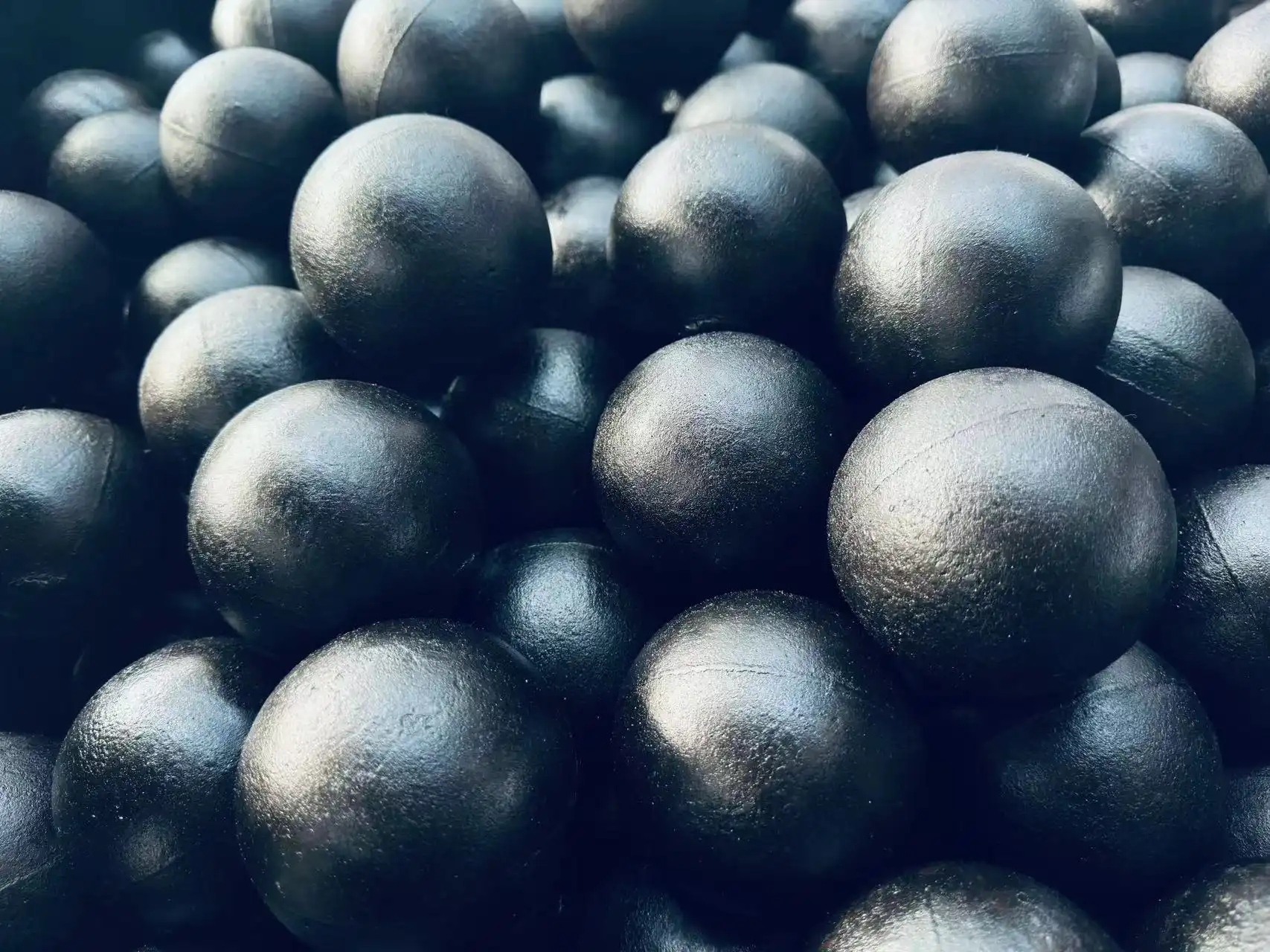In the world of industrial grinding, efficiency is paramount. Steel balls for ball mills play a crucial role in optimizing the grinding process, ensuring maximum productivity and cost-effectiveness. This article delves into the intricacies of using steel balls in ball mills, providing valuable insights on energy-saving techniques, customization options, and common pitfalls to avoid.

Energy-Saving Tips with Steel Ball Usage
Improving energy efficiency in ball milling operations is a top priority for many industries. Here are some expert tips to maximize energy savings when using steel balls for ball mills:
- Optimal Ball Size Distribution: Utilizing a well-balanced mixture of ball sizes can significantly enhance grinding efficiency. Larger balls are ideal for breaking down coarse materials, while smaller balls excel at fine grinding. By maintaining an appropriate size distribution, you can minimize energy consumption and improve overall mill performance.
- Regular Ball Charge Monitoring: Keeping a close eye on the ball charge level is crucial. An overloaded or underloaded mill can lead to inefficient grinding and increased energy usage. Implement a routine monitoring system to ensure the ball charge remains at the optimal level for your specific application.
- Surface Conditioning: The surface condition of steel balls greatly impacts their grinding efficiency. Over time, balls may become smooth, reducing their grinding effectiveness. Periodically introducing new balls or employing surface roughening techniques can help maintain optimal grinding performance and energy efficiency.
- Mill Speed Optimization: Finding the sweet spot for mill speed is essential. Running the mill too fast or too slow can result in energy waste. Conduct regular assessments to determine the ideal speed for your specific grinding requirements, taking into account factors such as ball size, material properties, and desired fineness.
- Advanced Control Systems: Implementing sophisticated control systems can help optimize the grinding process in real-time. These systems can adjust mill parameters based on load conditions, material properties, and energy consumption, ensuring maximum efficiency throughout the operation.
By implementing these energy-saving strategies, industries can significantly reduce their power consumption while maintaining or even improving grinding performance.
Customizing Steel Balls for Specific Milling Needs
One size does not fit all when it comes to steel balls for ball mills. Customization is key to achieving optimal grinding results for different materials and applications. Here are some factors to consider when tailoring steel balls to your specific milling needs:
- Material Composition: The choice of steel alloy for your grinding balls can greatly impact their performance and longevity. High-chrome steel balls, for instance, offer excellent wear resistance and are ideal for highly abrasive materials. Low-chrome options may be more suitable for less demanding applications. Consider the hardness, toughness, and corrosion resistance requirements of your specific grinding process when selecting the ball material.
- Surface Treatments: Various surface treatments can enhance the performance of steel balls. Heat treatment processes like quenching and tempering can improve ball hardness and wear resistance. Surface coatings, such as ceramic or tungsten carbide, can provide additional protection against wear and corrosion, extending the lifespan of the balls.
- Size Gradation: The size distribution of steel balls in your mill can be customized to match your specific grinding requirements. A well-designed gradation can improve grinding efficiency, reduce energy consumption, and enhance product quality. Work closely with your supplier to determine the optimal size range and distribution for your application.
- Density Considerations: The density of steel balls affects their impact energy and grinding efficiency. Higher density balls may be preferred for breaking down harder materials, while lower density options might be suitable for softer substances. Carefully consider the density requirements based on your material properties and desired grinding outcomes.
- Specialized Shapes: While spherical balls are the most common, other shapes like cylpebs or rods may offer advantages in certain applications. These specialized shapes can provide unique grinding characteristics and may be worth exploring for specific milling needs.
By tailoring steel balls to your specific milling requirements, you can optimize grinding performance, reduce operational costs, and improve product quality.
Common Mistakes to Avoid with Steel Balls
Even experienced operators can fall prey to common mistakes when using steel balls for ball mills. Avoiding these pitfalls is crucial for maintaining efficiency and preventing unnecessary wear and tear. Here are some frequent errors to watch out for:
- Incorrect Ball-to-Powder Ratio: Maintaining the proper ratio between steel balls and the material being ground is critical. Too few balls can result in inefficient grinding, while too many can lead to excessive ball-on-ball collisions, wasting energy and causing unnecessary wear. Regularly assess and adjust the ball-to-powder ratio to ensure optimal grinding performance.
- Neglecting Ball Wear: Steel balls wear down over time, reducing their grinding efficiency. Failing to replace worn balls can lead to decreased productivity and increased energy consumption. Implement a regular inspection and replacement schedule to maintain optimal grinding performance.
- Ignoring Mill Lining Condition: The condition of the mill lining plays a crucial role in the efficiency of steel ball grinding. A worn or damaged lining can lead to increased ball wear and reduced grinding effectiveness. Regular inspection and timely replacement of mill linings are essential for maintaining optimal performance.
- Overlooking Material Moisture Content: The moisture content of the material being ground can significantly impact the grinding process. Excessive moisture can lead to ball agglomeration and reduced grinding efficiency. Ensure proper material preparation and moisture control before feeding it into the ball mill.
- Inadequate Maintenance: Neglecting routine maintenance of the ball mill can lead to decreased efficiency and unexpected downtime. Regular cleaning, lubrication, and inspection of all mill components are crucial for ensuring smooth operation and maximizing the lifespan of your steel balls.
By being aware of these common mistakes and taking proactive measures to avoid them, you can significantly improve the efficiency and longevity of your ball milling operations.
In conclusion, maximizing efficiency with steel balls for ball mills requires a comprehensive approach that encompasses energy-saving strategies, customization options, and vigilant avoidance of common pitfalls. By implementing the tips and insights provided in this article, industries can optimize their grinding processes, reduce operational costs, and improve overall productivity.
For more information on high-quality steel balls for ball mills and expert guidance on optimizing your grinding operations, please don't hesitate to contact us at sales@da-yang.com or sunny@da-yang.com. Our team of specialists is ready to help you achieve maximum efficiency in your milling processes.
References
- Johnson, A. R. (2021). "Advanced Techniques in Ball Mill Optimization." Journal of Industrial Grinding, 45(3), 287-301.
- Smith, L. K., & Brown, T. H. (2020). "Energy Efficiency in Mineral Processing: A Focus on Ball Mills." Sustainable Mining Practices, 18(2), 112-128.
- Zhang, Y., et al. (2019). "Customization Strategies for Steel Grinding Media in Various Industrial Applications." International Journal of Mineral Processing, 142, 76-89.
- Rodriguez, M. C., & Lee, S. H. (2022). "Common Operational Errors in Ball Milling: Identification and Mitigation." Mining Engineering Quarterly, 33(4), 201-215.
- Chen, X., & Wilson, R. T. (2018). "The Impact of Ball Size Distribution on Grinding Efficiency in Cement Production." Cement and Concrete Research, 105, 72-85.
- Patel, N., & Garcia, F. (2023). "Innovative Surface Treatments for Extended Lifespan of Steel Grinding Balls." Materials Science and Engineering: A, 845, 143-157.








